Thank you for visiting! By the way… any links on this page that lead to products on Amazon and other stores/partners are affiliate links Aquarium Store Depot earns a commission if you make a purchase.
Are you looking for your first freshwater aquarium fish? Many beginner fish keepers make the mistake of walking into a pet store and choosing a few random fish by their looks and price, but this often leads to headaches down the road.
Here, I introduce eleven great fish species, share some important care tips, and explain what makes them so great for new fish keepers.
I’ve also included some common fish to avoid and added a handy list of equipment and basic knowledge to help you get started, so read to the end if you’ve never kept tropical fish before.
Let’s get learning!
Key Takeaways
- The best tropical fish for beginners are small, peaceful species that can adapt to various water conditions and store-bought foods.
- Tropical fish require warm, filtered water for long-term care. Select a filter and heater suitable for your tank size.
- Measure your local water parameters before selecting your first fish. This will help you choose fish that will suit your conditions.
- Read up on the aquarium cycle and water quality maintenance before buying your first fish. It’s generally safer for first-time fish keepers to cycle their aquarium before adding fish.
Best Beginner Tropical Fish
Ready to learn about 11 amazing fish species for beginners? Let’s get started! Check out the video below from our YouTube Channel. Our blog also goes into great detail. Follow along with both. Let’s begin!
1. Livebearers
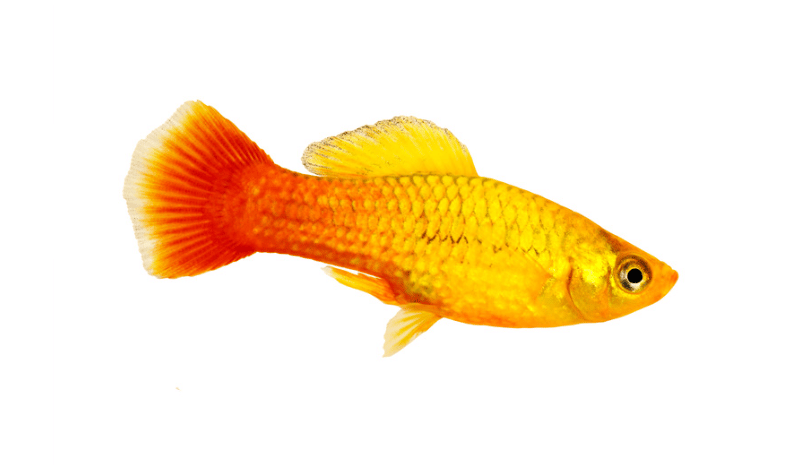
- Scientific name: Poecilia and Xiphophorus spp.
- Origin: North, Central, and South America
- Size: 1 – 6 inches
- Minimum tank size: 10 gallons for guppies and Endler’s, 20+ gallons for swordtails and molly fish
- Temperament: Generally peaceful
- Swimming level: All levels
- pH: Most species prefer pH levels above 7
- Temperature: Upper 60’s to upper 70’s Fahrenheit
- Key benefits: Affordable, colorful, easy to breed
Livebearers are a great first-fish because they are so affordable and easy to care for. These fish are also available in a wide variety of colors, from jet-black molly fish to fiery red variable platies and multicolored fancy guppies, so you can choose literally any color you like!
Several differnet species from the same family are available in the hobby, including:
- Guppy fish (Poecilia reticulata)
- Endler’s livebearer (Poecilia wingei)
- Platy fish (Xiphophorus maculatus & X. variatus)
- Molly fish (Poecilia sphenops & P. latipinna)
- Swordtail fish (Xiphophorus hellerii).
All of these tropical fish are members of the Poeciliidae, a family known for producing live baby fry rather than laying eggs. This makes livebearers very easy to breed, even for complete beginners. However, you could keep only males if you don’t want your fish to multiply1.
Live-bearing fish are generally very easy to care for and will thrive on a diet of small pellets or flake food. Some species will even feed on algae and help to keep their own tank clean!
2. Betta
Use Coupon Code ASDFISH at Checkout
Betta Fish are one of the most beautiful varieties of freshwater fish available in the hobby. Easy to care for with plenty of varieties!
- Scientific name: Betta splendens
- Origin: Thailand
- Size: 2- 2.5 inches
- Minimum tank size: 5+ gallons
- Temperament: Aggressive
- Swimming level: Middle and upper levels
- pH: 6.5-8
- Temperature: 76-81°F
- Key benefits: Spectacular colors and fins, thrives in tanks as small as 5 gallons
The betta fish is one of the most popular fish in the hobby due to their beauty and feisty personality. The combination of amazing colors and impressive flowing fins make these small fish excellent display animals for small aquariums.
Bettas are suitable for some community tanks, although they are usually kept alone in their own tank. These fish don’t need a lot of room, and it’s possible to keep them happy and healthy in a tank as small as 5 gallons. However, you will need to perform regular water changes and equip your aquarium with an aquarium heater and a suitable filter.
3. Danios
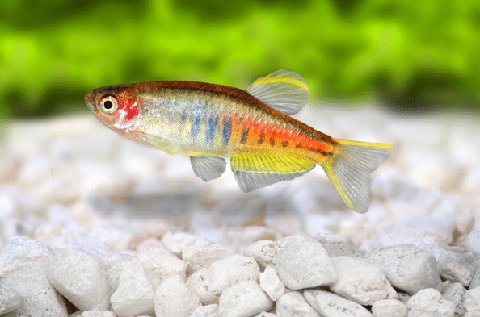
- Scientific name: Danio rerio
- Origin: Asia
- Size: 2-2.5 inches
- Minimum tank size: gallons
- Temperament: Peaceful
- Swimming level: All levels
- pH: 6.5-7
- Temperature: 72-81°F
- Key benefits: Hardy, affordable, and active. Various breeds available
There are many danio species in the fishkeeping hobby, and some of them are excellent options for beginners. The popular zebra danio (Danio rerio) is one of the hardiest species and is suitable for larger aquariums in the 20-gallon range.
Zebra danios usually have a silvery body with dark horizontal stripes. However, there are many different breeds, and the spotted leopard danios and the eye-catching neon Glofish breeds are all the same species.
These active fish can be kept in tanks as small as 10 gallons, although they will appreciate the extra swimming space of a 20-gallon long. Smaller species like the celestial pearl danio are a little more difficult to care for, although they are suitable for moderately experienced fishkeepers with a planted aquarium.
4. Corydoras Catfish
A small and active cory catfish. Does best in groups of at least 5
- Scientific name: Corydoras spp.
- Origin: South America
- Size: 1-3 inches
- Minimum tank size: usually 30+ gallons, although small species can be kept in tanks as small as 10 gallons
- Temperament: Peaceful
- Swimming level: Mostly bottom dwellers
- pH: 6.5-8
- Temperature: 72-82°F depending on species
- Key benefits: Peaceful community fish for the bottom levels of tropical aquariums
There are dozens of corydoras species available in the aquarium hobby, including popular species like the peppered, bronze, albino, and panda cory catfish. These chunky bottom feeders are some of the best tropical fish for community tanks, although they don’t win any prizes for their color.
Cory catfish prefer to spend their time peacefully searching the substrate for tasty morsels, although they often shoot up to the surface to grab a breath of air. These entertaining fish will hang out in loose schools of their own species, so try to buy a small group of a single type.
5. Honey Gourami
One of the more peaceful Gourami fish available in the hobby. Has a unique yellow coloration and only grows up to 2 inches in length
- Scientific name: Trichogaster chuna
- Origin: Southern Asia
- Size: 2-2.5 inches
- Minimum tank size: 10 gallons
- Temperament: Peaceful
- Swimming level: Middle and upper levels
- pH: 6-8
- Temperature: 74-82°F
- Key benefits: Peaceful alternative to betta fish
The honey gourami is a peaceful labyrinth fish that can be kept with other popular tropical fish like neon tetras, rainbow fish, and many more. These interesting fish have modified pelvic fins that they use like little arms to feel the world around them.
Honey gouramis aren’t quite as colorful as dwarf gouramis, although they are much better fish for beginners due to their peaceful nature. However, these fish are also available in some great color morphs like the sunset and red breeds.
Honey gouramis are predators that hunt for small aquatic invertebrates and their larvae, although they are easy to feed in captivity. Provide regular flake food and some tasty treats like frozen blood worms and brine shrimp.
7. Cherry Barb
- Scientific name: Puntius titteya
- Origin: Sri Lanka, South Asia
- Size: 2 inches
- Minimum tank size: 15-20 gallons
- Temperament: Peaceful
- Swimming level: All levels
- pH: 6-7.5
- Temperature: 73-81°F
- Key benefits: A peaceful and inexpensive schooling barb
Cherry barbs are peaceful schooling fish that can be kept with other small peaceful fish like white cloud minnows and zebra danios.
Males develop a beautiful cherry red shade, although females are also attractive, with a rich orange color and a pair of bright and dark horizontal stripes on each side.
Cherry barbs are omnivorous fish that thrive on small pellets or flake foods, although they will appreciate a varied diet including live or frozen foods like blood worms. These fish love to hang out together so pick up a school of six or more.
8. Black Neon Tetra
A variant neon variety. More reliant than neon and cardinal tetras
- Scientific name: Hyphessobrycon herbertaxelrodi
- Origin: South America
- Size: 1.5 inches
- Minimum tank size: 15-20 gallons
- Temperament: Peaceful
- Swimming level: Middle and upper levels
- pH: 5.5-7.5
- Temperature: 71-82°F
- Key benefits: One of the hardiest tetras
Black neon tetras are perfect community fish for beginners, offering great color and a peaceful nature. These midwater swimming fish will thrive in a tropical fish tank with other schooling fish and bottom dwellers like corydoras catfish and the bristlenose pleco.
Black neon tetras are schooling fish that should be kept in a group of their own species. A 15-gallon tank would be suitable for about 6 fish.
9. Small Plecos
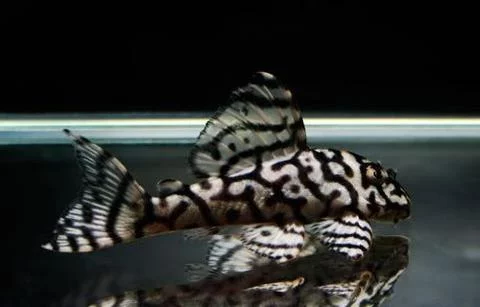
- Scientific name: Ancistrus spp. etc.
- Origin: South America
- Size: 4-6 inches
- Minimum tank size: 20-30 gallons
- Temperament: Peaceful
- Swimming level: Bottom dweller
- pH: 5.7-7.5
- Temperature: 73-80°F
- Key benefits: Fascinating bottom dwellers that can help to control algae in the aquarium
There are hundreds of pleco species known in the aquarium trade, although small species like the bristlenose pleco are most suitable for beginner fish keepers. These fascinating creatures are very peaceful despite their unusual appearance.
These gentle catfish will not bother other fish, although they can be a little territorial toward their own kind. That means it’s best to keep just one small pleco species in the same aquarium unless you have a large tank.
Bristlenose and other small plecos are herbivores that can do a great job of cleaning algae in the aquarium, although you should also provide plenty of driftwood for them to graze on. They will also eat plant food like cucumber, zucchini, sinking algae wafers, and gel foods.
10. Kuhli Loach
Kuhli Loaches are hardy bottom-dwelling fish. Nocturnal in nature. Gets along with many fish and tolerate of coldwater environments
- Scientific name: Pangio kuhlii
- Origin: Southeast Asia
- Size: 3-4 inches
- Minimum tank size: 20 gallons
- Temperament: Peaceful
- Swimming level: Bottom dweller
- pH: 5.5-6.5
- Temperature: 73-86°F
- Key benefits: Interesting bottom dweller that will clean up uneaten food
Kuhli loaches are fascinating creatures that look like hyperactive eels as they zoom along the bottom of the tank. However, these small loaches are mostly nocturnal, so they are usually active after the lights go off.
There are a few species in the hobby including the black kuhli loach which is really more of a chocolate-brown shade. However, the regular banded kuhli loach is one of the most attractive types.
These fish love to hang out with their own kind, so it’s best to buy five or more and let them explore together. They will burrow under rocks and driftwood or tunnel into the substrate but come out to search for uneaten food and sinking pellets or tablets when they smell food in the water.
11. Kribensis Cichlid
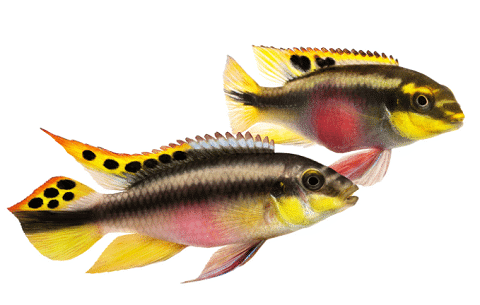
- Scientific name: Pelvicachromis pulcher
- Origin: West Africa
- Size: 3-4 inches
- Minimum tank size: 20 gallons
- Temperament: Generally peaceful but can be aggressive when breeding
- Swimming level: All levels
- pH: 6-7
- Temperature: 75-79°F
- Key benefits: A relatively peaceful and adaptable African cichlid with amazing colors
The kribensis cichlid is a beautiful dwarf cichlid from West African rivers. These colorful fish do not require the hard, high pH water chemistry of other popular African cichlids, making them a good choice for many community setups or even breeding projects.
These fish spawn easily, and they are fascinating to breed, although they can get pretty aggressive in the breeding season. Males and females are similar in appearance, although females tend to be shorter and plumper, while males have a more streamlined body shape and longer pointed caudal, anal and dorsal fins.
Kribensis cichlids are easy to care for and will thrive on regular commercial foods like flakes and pellets. They are generally suitable for larger planted tropical fish tanks with other small, peaceful fish, although they are not shrimp-safe.
Species to Avoid
Unfortunately, there are many popular tropical fish that are not really suitable for beginner fish owners. Most pet stores have knowledgeable staff that will point new fishkeepers in the right direction, although sometimes beginners buy fish that are better left to the experts.
Avoid these fish until you are a little more experienced.
Tankbusters
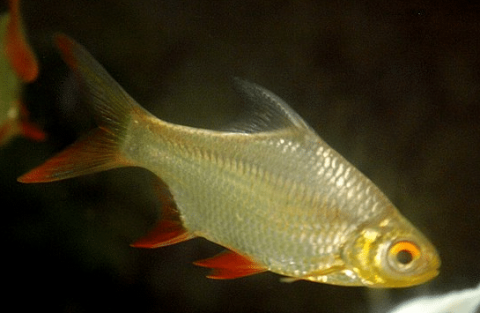
Some popular aquarium fish grow surprisingly large and require very large aquariums when they reach adult size. Avoid these common tank busters until you are more experienced and have room for a much larger tank:
- Common pleco – grows to over 12 inches
- Red-tailed catfish – grows to over 5 feet!
- Bala shark – grows to over 12 inches
- Clown loach – grows to about 12 inches
- Tinfoil barb – grows to over 12 inches
Aggressive Species
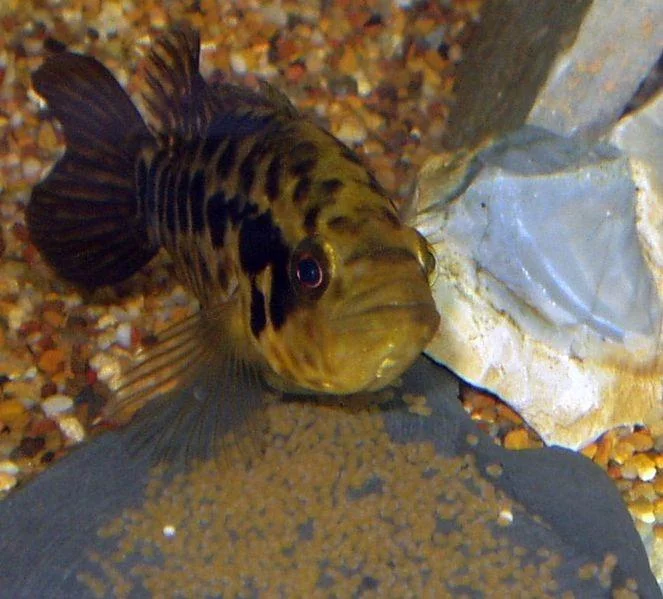
Some aquarium fish are prized for their aggressive behaviors, while others are surprisingly mean and territorial. Aggressive fish can be exciting pets, although they are not recommended for beginners.
Let’s take a look at some examples.
- Chinese algae-eater – These fish are known to feed on the slime coat of other fish
- Red-tailed and rainbow sharks – These fish can be surprisingly aggressive and territorial, especially toward their own kind.
- Jaguar Cichlid – These large cichlids are extremely aggressive towards other fish and may even bite human hands.
- Red devil cichlid – Red devils are highly aggressive Central American Cichlids that need large aquariums and tough tank mates.
Species With Special Water or Care Requirements
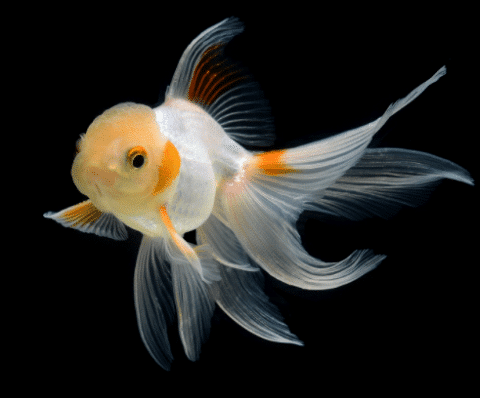
Some freshwater fish breeds and species have specific needs that make them more difficult to care for. The following fish are better for more experienced fish keepers.
- Fancy goldfish – Goldfish are not tropical fish. These common aquarium fish need cool water conditions and are usually kept in unheated fish tanks.
- African cichlids – African cichlids from the Rift Valley lakes require high pH water with a high mineral content. Many species are highly territorial too, so these fish are better left to more experienced fishkeepers.
- Discus – The discus fish requires pristine water conditions to survive. These sensitive fish are not suitable for beginners.
Why Are Some Species Easier To Keep?
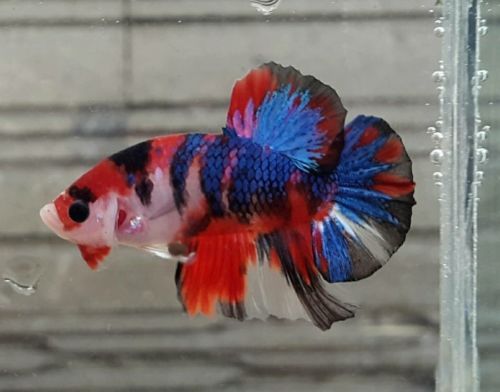
You may be wondering how I chose the fish in this list, or why some fish are better for beginners than others. Well, it really comes down to a few different factors that make them tougher and easier to care for.
Let’s take a look at five important characteristics of good beginner fish.
- Hardiness
The ideal beginner fish are relatively hardy and will usually survive the kind of mistakes inexperienced fish keepers tend to make.
Many new fish keepers will take some time to figure out how much to feed their fish, or how often to clean their tank or change their water. Basically, hardy beginner fish are much harder to kill.
- Diet
Some fish species have very specific diets that are difficult to provide in an aquarium. Fortunately, all the fish in this list will feed on regular commercial foods like flakes, pellets, or wafers.
However, it’s still important to select the right kinds of foods for your specific fish species. Many small schooling fish will do well on a flake diet, while bottom feeders like corydoras prefer sinking pellets and tablets.
- Size
Bigger fish aren’t necesarily more difficult to care for, although small fish in the 1.5-3 inch range make ideal beginner fish because they tend to do well in the smaller aquariums that most fish keepers start out with.
Aquariums in the 15 to 30-gallon range are generally cheaper and easier for beginners to maintain.
- Temperament
Each fish has its own individual temperament, although different species tend to have certain characteristics. Confident but peaceful fish are the ideal species for beginners because they tend to feed well and get along with other species. Aggressive and shy fish may require more experience.
- Adaptability
Some fish have very specific requirements when it comes to temperature, water chemistry, flow, and other factors.
These fish may be easy to care for if you can provide these conditions, but it is usually best to start out with adaptable fish that thrive in the average home aquarium.
Aquarium Basics – Getting Started

Have you chosen your favorite beginner fish? Run through this list of basic equipment and important concepts before you buy your first fish.
Basic Equipment List
- Suitable fish tank – A 15-30 gallon is ideal for beginner fish keepers as they are relatively easy to maintain. Avoid bowls or tanks smaller than 5 gallons.
- Aquarium heater and thermometer – Tropical fish require a suitable heater to create the warm water conditions that match their natural habitat.
- Aquarium filter – You will need a filter to keep your water clean and clear. An air-powered sponge filter is adequate for a small aquarium, although power filters, hang-on-backs, and canister filters are better for larger aquariums.
- Substrate and decorations – Use only clean, aquarium safe products in your fish tank.
- Maintenance equipment – You’ll also need some cleaning and maintenance equipment like a gravel vacuum, water test kit (pH, GH, KH, Ammonia, Nitrite, Nitrate), water conditioner and a bucket.
Important Concepts for Beginners
Take the time to learn about the following important concepts before you buy your first fish.
- Water parameters – Its important to measure your water hardness and pH before buying your fisrt fish. That way you can choose fish that are naturally suited to your water conditions.
- The Nitrogen Cycle – Excess nutrients from fish waste and uneaten food are processed by special bacteria in a cycled aquarium. Understanding this cycle will make you a better fish keeper and help you maintain a healthy aquarium.
- Regular Maintenance – Your aquarium will require regular cleaning and partial water changes to remove dirt, algae, and the excess nutrients left behind from the nitrogen cycle. Ideally, the frequency of these water changes should be based on nitrate levels measured with your water test kit.
Some of these concepts may seem a little tricky at first, but don’t be intimidated by the technical side of the hobby. The Aquarium Store Depot website is full of in-depth articles that will help you keep your tropical fish happy and healthy for years to come!
FAQs
What is the easiest tropical fish to keep for beginners?
Guppies and zebra danios are among the easiest tropical fish in the aquarium hobby. Zebra danios are particularly hardy fish, although they do best in a larger aquarium of 20 gallons or more. Guppies will thrive in a tank of 10-15 gallons with basic care.
What is the best tropical fish for a new tank?
Many new fish keepers make the mistake of adding fish to a new tank right away because they are unaware of the aquarium nitrogen cycle. This process can take several weeks, although some aquarists successfully cycle new aquariums with hardy fish like zebra danios.
What fish to put in tank first?
Its best to add just a few fish at a time until your biological filtration system is fully accustomed to a high bioload. Hardy schooling fish like zebra danios or black neon tetras are a good first fish, although there is no set sequence when adding fish to an aquarium.
Final Thoughts
Choosing your first fish is an exciting step at the start of a wonderful new hobby and hope the information in this guide has helped you choose your next pets! My best advice is to take your time and enjoy the process of learning before buying your first fish.
Looking for more fishkeeping information? Browse the rest of my in depth articles for more on these and other tropical freshwater fish. You’ll also find loads of other helpful articles on every aspect of tropical fishkeeping!
- About the Author
- Latest Posts
I’m thrilled that you found Aquarium Store Depot! Here you’ll find information on fish, aquariums, and all things aquatics related. I’m a hobbyist (being doing this since I was 11) and here to help other hobbyists thrive with their aquariums! I adhere to a high quality Editorial Process and Review products with real life field usage and practical analysis.

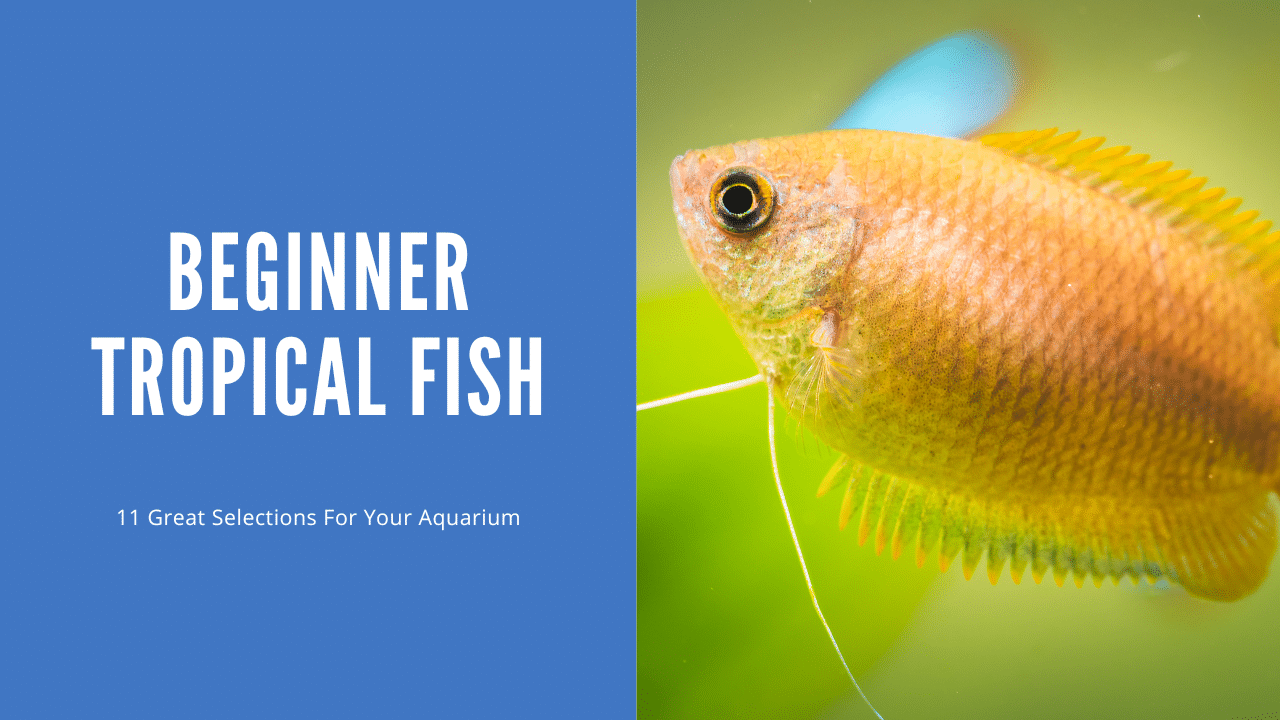
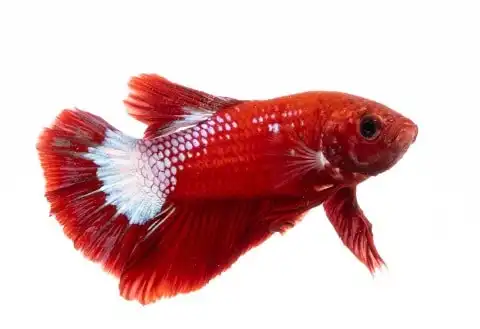
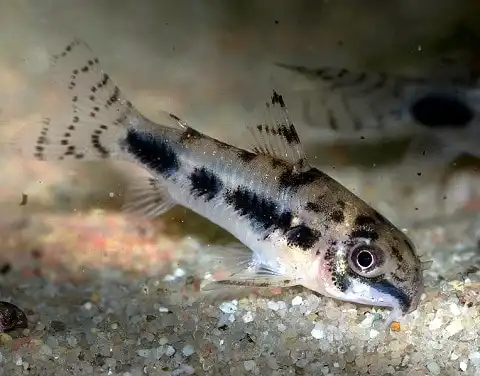

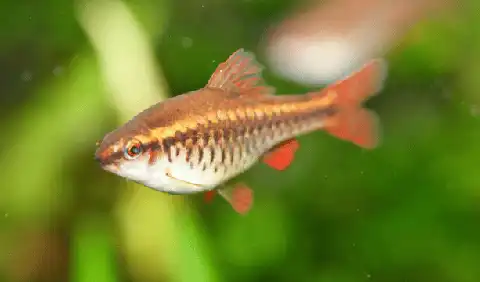
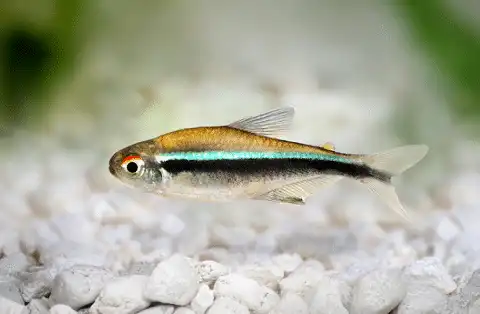





Are Apistogramma chiclids good community 20 gallon tank?
They can get aggressive. Would be better in a 20 gallon long, 29, or 40
I have a ammonia issue with my new 20 gallon tank. What should i do to resolve this issue?
Reduce stock, add beneficial bacteria and make sure you have a filter to house the bacteria